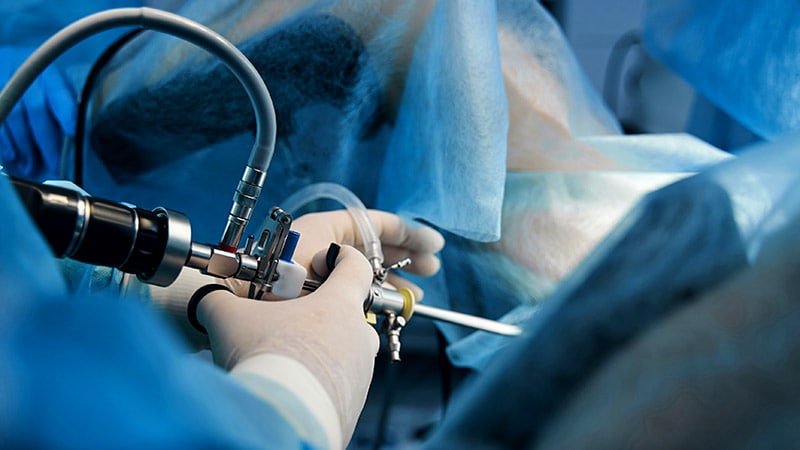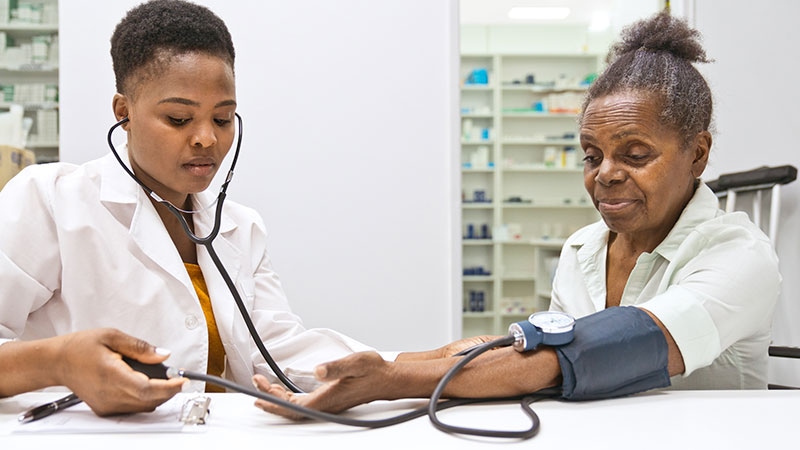One in every six frontline maternity healthcare staff have COVID-19 antibodies, with one third of them showing no symptoms at all, finds a study of employees at two London maternity units.
Published in the journal, Anaesthesia, the study provides the largest report of antibody levels in obstetric healthcareworkers to date.
Led jointly by Dr Sohail Bampoe, and Dr Peter Odor, both consultant obstetric anaesthetists at University College London Hospitals (UCLH) NHS Foundation Trust, the study found that, "Seroconversion was more than twice as prevalent in UK obstetric healthcare workers as in the general population of the UK…" However, they added that, the results were similar to estimates of seroconversion in the general population in Greater London.
Seropositivity for COVID-19 antibodies was found in 14.5% of maternity healthcare workers, and of these 35.5% were completely asymptomatic, write the authors.
COVID-19 and Pregnancy
The findings reflect previous reports that pregnant women experience a much milder form of COVID-19 and have a greater proportion of asymptomatic carriers that might be transmitted to staff, between staff, and from staff to patients.
Dr Bampoe and co-authors conclude that until more robust evidence about asymptomatic transmission is available, "…extreme caution is advisable in maternity settings, particularly the consistent use of effective personal protective equipment (PPE)…social distancing of staff and the regular washing of hands". They also recommend regular COVID-19 testing of staff and self-isolation if sense of smell and taste is lost.
Dr Edward Morris, president of The Royal College of Obstetricians and Gynaecologists welcomed the study but cautioned that, "as noted in the College guidance on COVID-19 infection and pregnancy, it is essential for pregnant women to continue to attend for antenatal care throughout their pregnancies".
Also commenting on the findings, Dr Sebastian Johnston, professor of Respiratory Medicine & Allergy, Imperial College London, drew attention to the high rate of asymptomatic infections. "It is likely that an even greater proportion of cases with false negative antibody tests would have been asymptomatic. These data are consistent with other reports, such as the REACH2 data reporting that 70% of swab positive cases reported no symptoms in the week preceding their positive swab, indicating that SARS-CoV-2 infection is likely to have been very much more widespread than currently estimated."
Nearly 60% of Seropositive Individuals Did Not Self-isolate
The study aimed to investigate the prevalence of previously undiagnosed COVID-19 infection, using antibody testing in 200 maternity healthcare professionals from two maternity units at University College London Hospital and St George's Hospital, respectively. They were tested over a 3-week period between May and June 2020, and comprised 40 anaesthetists practising in maternity, 108 midwives, and 52 obstetricians.
Overall, positive tests for IgG antibodies to COVID-19 were found in 29 of the 200 (14.5%) people tested, with the highest rate in midwives 17/108 (15.7%; 95%CI 9.5–24.0%), followed by obstetricians 7/52 (13.5%; 95%CI 5.6–25.8%), and anaesthetists 5/40 (12.5%; 95%CI 4.2–26.8%), report the authors. Results were similar in both hospitals.
And of those who tested seropositive, 10/29 (35.5%) were completely asymptomatic, and fever or cough were only present in 6/29 (20.7%) and 10/29 (34.5%) respectively. Anosmia was the most common symptom occurring in 15/29 (51.7%) of those staff testing positive.
The data also reveal that only 41.4% of health care workers who tested positive for COVID-19 antibodies met criteria for self-isolation at any point, meaning that over half (58.6%) of positive staff did not self-isolate and continued to provide patient care in the hospital setting. In this population, the only symptom predictive of a positive test was anosmia. The UK government has since added anosmia to symptoms that mandate self-isolation.
Obstetrics Differences
They also note that seroconversion among obstetric staff appears to be lower than rates in other frontline healthcare worker groups, for example, a recent study showed a collective seroconversion score across staff in intensive care, COVID-19 wards, and haematology of 45.3%.
"One possible explanation for the difference in seroconversion rates between obstetric healthcare workers and other frontline healthcare workers could be due to the transmission characteristics of SARS-CoV-2," explain the authors.
Drawing a comparison to influenza, which has a similar transmission pattern to COVID-19, patients can spread disease asymptomatically, and in these individuals viral load and shedding is reduced. "Asymptomatic individuals infected with SARS-CoV-2 pose a lower transmission risk to others. Hence the reported greater proportion of asymptomatic infection in pregnancy and generally milder symptom profile…[this] may explain why obstetric healthcare workers appear to have a lower risk of occupational viral transmission, as SARS-CoV-2 pregnant patients may be less infective than respiratory or acute emergency patients."
Prof Johnston added that, "It is likely that a substantial number of workers with false negative antibody tests would have also continued working, despite being infected. The potential for such large numbers of people, who continued working despite being infected, to further spread the virus to their co-workers and their patients, is obvious.
"These data together are very consistent with an increasing body of work indicating that SARS-CoV-2 infection in the UK is likely to have been very much more widespread than currently estimated. The implication is that any second wave that may occur in the UK, is likely to be very much smaller than current estimates suggest."
COI: None declared.
Published in Anaesthesia at 23:01 UK time on Tuesday 11 August 2020.https://doi.org/10.1111/anae.15229 Full text.





